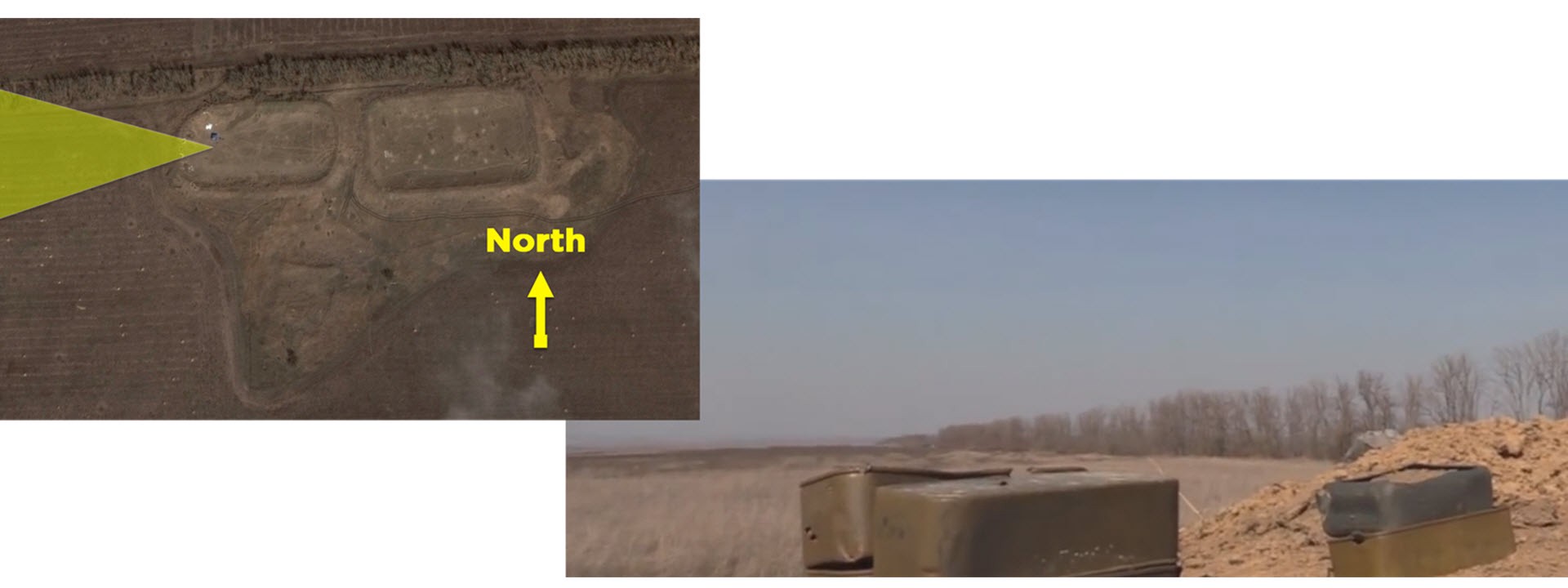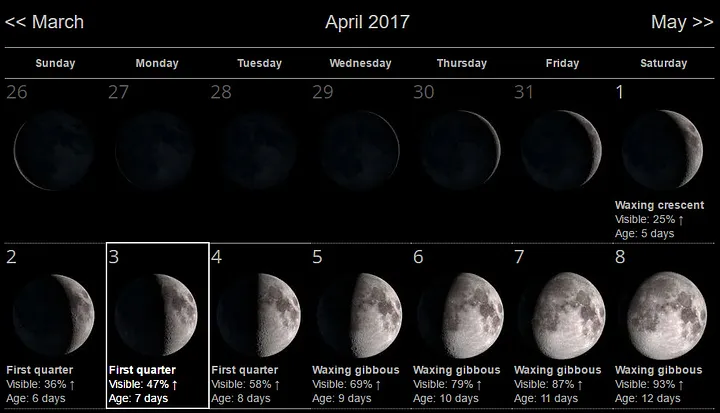How is the Easter Ceasefire Holding Up in Ukraine?
Monitoring the progress of the new April 1 ceasefire in the Donbas
How is the Easter Ceasefire Holding Up in Ukraine?
Share this story

BANNER: Separatist fortifications near Kominternove, located at 47.206143 37.818002. Yellow cone shows perspective of video. Source: Google Earth, Lancaster video
On April 1, a ceasefire went into effect in Ukraine after being agreed upon by the Trilateral Contact Group (Ukraine, Russia, OSCE). The ceasefire, which began at midnight, was to last throughout the Easter holiday, with an emphasis on ceasing hostilities near the town of Stanytsia Luhanska.
Numerous ceasefires in eastern Ukraine have been negotiated and carried out with varying success near Easter, Christmas, and the beginning of the school year. Has this Easter ceasefire had any success, or is it just another unsuccessful attempt at de-escalation?
April 1
The Easter ceasefire started out promisingly on April 1, with relatively few ceasefire violations. According to the OSCE Special Monitoring Mission (SMM) to Ukraine report published on April 3, only about 90 explosions were observed overnight between April 1–2, compared with over 600 the evening of March 31-April 1. A surge of shelling and fighting took place on the night of March 31, but these instances dropped dramatically after the stroke of midnight, with the beginning of the ceasefire.
Much of the fighting observed by the OSCE on April 1 was centered near Ukrainian-controlled Avdiivka and DNR-controlled Yasynuvata, where about 60 explosions were recorded throughout the day. In a local Vkontakte community for Yasynuvata residents, an image was shared showing smoke in the distance, but there was little specific information on fighting through the day. In fact, the smoke was likely from a brush-fire, which have been frequent over the last few weeks in the area.
#Donetsk @LifeInDonetsk Dry grass and reeds are on fire https://t.co/jUuxsZfooc
— English Luhansk (@loogunda) April 1, 2017
Ukrainian officials claimed that the heaviest fighting took place in the area of Mariupol, on the southern coast of eastern Ukraine. In particular, Ukrainian forces came under mortar fire in the village of Berezove.
Russia-backed separatists, in turn, accused Ukraine of breaking the ceasefire on April 1. Representatives from the so-called Luhansk People’s Republic (LNR) claimed that Ukrainian forces shelled the village of Kalinovka about an hour after the ceasefire took effect, and committed 14 violations throughout the day.
Four Ukrainian soldiers were reportedly wounded, though two of these injuries apparently came when a truck drove over an explosive.
April 2
While the ceasefire did not strictly hold, there continued to be a general reduction in hostilities through the second day, though an escalation in violence took place overnight between April 1 and 2.
A video filmed by Patrick Lancaster, a video freelancer who is often embedded with Russia-backed separatists, shows fighting that took place overnight from April 1 into April 2 near Mariupol.
At one point in the video (1:55), he asks what city is in the distance, to which the fighters reply that it is Gnutovo (Hnutove in Ukrainian). To the left is Prymorske, and further on, the fighters explain, is Mariupol — indicating that they are facing west.


We can further verify the date of the video by a shot of the moon partway through the footage, showing a first quarter moon. This corresponds with the lunar calendar for the night of April 1–2. A comparison of the moon from Lancaster’s footage and the lunar calendar shows a match for April 2:


Lancaster describes how he was located in the trenches outside of the town of Kominternove (also called Pikuzy, highlighted in green on the map above) when fighting broke out. His video footage shows fire back and forth, but without any reliable indications as to who initiated the fighting.
We can locate the separatist position near Kominternove with some of the landmarks captured in Lancaster’s videos — namely the arrangement of the tree-lines and the fortifications.



These separatist fortifications are rectangular with piles of earth on each side, with a treeline close to the north, and another further to the south, past a field. Observing satellite imagery, there is only one real candidate near Kominternove, which matches the video when facing west, towards Ukrainian positions at Hnutove.

We can reconstruct the field of vision in the video, compared to observable Ukrainian positions and entrenchments in nearby Hnutove.

Additional shelling was reported by the OSCE SMM to Ukraine throughout the day, such as near Olenivka and Sakhanka, but no casualties were noted in relation to these incidents. For example, separatist forces shelled the government-controlled “Promzone” industrial area in southeastern Avdiivka:
Пол часа назад крыли промку. #Авдеевка
— Сич Авдія (@owl_ok) April 2, 2017
One Ukrainian soldier was wounded on April 2 according to the ATO Press Center, though the location of the incident was not disclosed. In the same statement, the press center claims that Ukrainian forces did not return fire — a claim contradicted by the video shot by Patrick Lancaster, showing fire coming from both sides east of Mariupol.
Additionally, a teenage boy was wounded in Maryinka as a result of shelling from separatist forces.
Eduard Basurin, of the so-called Donetsk People’s Republic (DNR) Ministry of Defense, reported that one separatist soldier was wounded by Ukrainian shelling on April 2. Basurin also claimed that Ukrainian forces conducted thirty-six violations of the ceasefire on April 2, including damaging a house located at ul. Lenina 32/6 in Dokuchaievsk. There is no specific evidence available to verify that this building was damaged, but there were numerous reports from locals indicating that shelling was taking place near the city on the evening of April 2.
21:55 Докучаевск, начался шум, тяжелое.
— Александр Негоц (@Semperf1ve) April 2, 2017
#Докучаевск от этого "перемирия" охлохнуть можно
— ~YoZhyK~ (@YoZhyKvtumane) April 2, 2017
Despite the relatively low number of casualties, by the end of April 2 the war had picked back up in eastern Ukraine after the brief “ceasefire.” As one person noted online, “six strong Minsk Agreements flew by,” referring to likely tank or artillery shells.
с гвардейки сегодня раз шесть мощные минские договоренности улетали
— 25%відсотковий (@Palchakkk) April 2, 2017
April 3
After two days of relative quiet, the ceasefire saw its first fatalities on April 3.
The ATO Press Center stated that two Ukrainian soldiers died and another two were wounded on Monday, April 3. Both of these soldiers died from shelling near Avdiivka — one close to the town, and another at the Butovka mine, located in between Ukrainian-controlled Avdiivka and the Donetsk Airport. Further details regarding the identity of the soldier and the nature of the attack have not been published by the Ukrainian ATO Press Center.
A video of this Ukrainian position from just about three weeks ago can be viewed on the Ukrainian Military TV’s YouTube channel:
The second Ukrainian soldier who died on April 3 was a young man from the 72nd Brigade, 19-year old Vladislav Makarov. A local official in Dnipro (former Dnipropetrovsk), Tatyana Guba, shared information on the death of Makarov on her own Facebook account, noting that the young man was severely injured near Avdiivka in the late afternoon of April 2, from separatist shelling.
While there was a significant increase in fire from both sides on the night of April 2, there seems to have been even more on April 3. Civilians reported hearing an increase in hostilities throughout eastern Ukraine, on both sides of the front line.
In separatist-controlled Dokuchaievsk, heavy fighting was again reported:
A pro-separatist group on Vkontakte reported fighting originating from Donetsk Airport, a separatist stronghold.

Ominously, a Makiivka local tweeted at 10:16pm that more heavy equipment was being transported along the highway — a possible warning of worse to come.
ФБ 22.16 По Макшоссе техника идет, минут 10 уже, направление неясно…
???— Hochu dodomu v UA (@hochu_dodomu) April 3, 2017
April 4
As of the time of publication, two more Ukrainian soldiers had died since the two reported by the ATO Press Center on April 3.
In their morning briefing, the ATO Press Center counted forty-eight instances of separatist fire on Ukrainian positions, violating the Easter ceasefire. Two soldiers died, and another five suffered injuries. At the time of publication, the identities and locations of the deceased soldiers were unknown.
Moving forwards
Despite the ongoing fighting during the “ceasefire,” the beginning of April saw a significant de-escalation compared with March. The fact that it has been possible to cover a large portion of the Minsk violations occurring over a three-day period in one article is a positive sign — the same length would barely have covered a few hours of fighting in much of March.
Ukrainian official Yaroslav Chepurnoy expressed optimism regarding the current ceasefire, saying that the “ number and intensity of shelling incidents are decreasing, the frequency of the use of heavy systems is on the decline,” and that he hopes that by April 6, there will be no observed violations. This prognosis may be optimistic, but any progress in this three-year-long war should be applauded. The DFRLab will continue to monitor the progress of the ceasefire, looking towards Orthodox Easter on April 16.

